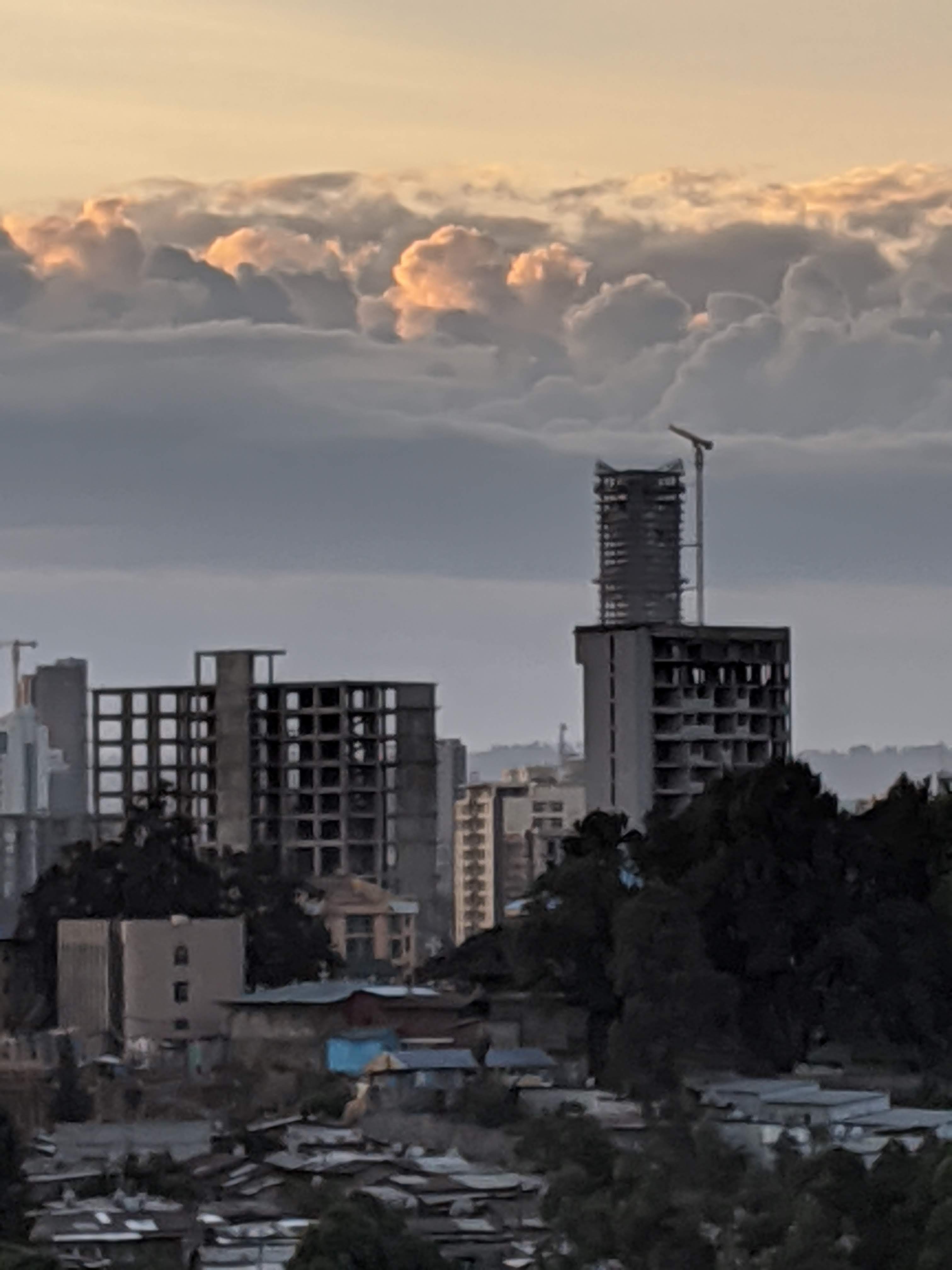|
Today's Opinions, Tomorrow's Reality
The Unfinished City By David G. Young Addis Ababa, January 19, 2020 -- Ethiopia's growing pains have created a capital city filled with half-finished skyscrapers. The Commercial Bank of Ethiopia's tower soars 650 feet above Addis Ababa, a height that should have made it the tallest skyscraper in Africa sometime last year. Except this never happened. Today, an empty skeleton of steel and concrete looms over the city, with work stalled since the frame was topped out in November 2018.1 Look across the skyline after dawn and you will see the sun shine through the frames of hundreds of other skeletal towers, giving the city an eerie unfinished look.
The building boom that was poised to turn Addis Ababa into the Dubai of Africa has stalled. A new taller skyscraper in Johannesburg was completed last year, robbing Addis Ababa of the prize of Africa's tallest building. Little work is visible on Addis Ababa's skyline, with many projects suspended from of a lack of foreign currency needed to import the finishing materials. What work continues is often being done by Chinese construction companies with access to foreign cash from Chinese loans that keep things going. Indeed, one of the city's largest completed projects is the enormous modernist African Union complex completed in 2012. A "gift" from China, which built a pagoda and arch in the complex's back yard, this white elephant development is disturbingly quiet. While its 328 foot tower is currently the tallest finished building in the city, the guardposts and razor wire around its perimeter appear to protect a barely used ghost town. But the stalled skyscrapers in the rest of the city could be put to plenty of use. The population of Addis Ababa is skyrocketing as peasants in the country of 100 million follow opportunity to the capital. The last census in 2007 counted just 2.7 million residents, but it has certainly grown much more since then. Many of the poorest new arrivals crowd into shacks with corrugated metal roofs along ravines or in the interiors of city blocks surrounded by the concrete towers. The government would like to clear these slums and move the people to new condominium housing.2 But that can't happen if the buildings never get completed. Addis Ababa is bounded by mountains on the north and the farmland of neighboring Oromia region to the south. Violent protests killing 140 people halted plans to expand the city's boundaries to the south to create more land for construction.3 The city's ethnic mix is dominated by the Tigrayan ruling minority as well as the dominant Amayra-speaking people. The neighboring Oromo people, already feeling marginalized, are in no mood for a land grab from their ethnic rivals. With city expansion politically untenable, the only direction to build is up. While empty skeletons of buildings may seem worthless, they do serve the interests of a few. In a country where the government owns all the land, exercising a permit to build a skyscraper serves to stake a claim, even if the building can't be completed anytime soon. A concrete frame also serves as a way to show progress to gullible overseas Ethiopian investors, whose hard currency can be diverted to finish other projects while initial work framing a new building is completed largely with local currency.4 The government's response has been to devalue the Ethiopian Birr's fixed exchange rate against the US Dollar in order to make exports more competitive to earn more foreign currency. It has also embarked on a campaign to draw more tourist dollars to Ethiopia. It opened a glitzy Unity Park last year that requires foreigners to pay US Dollars to visit a Disneyland-like complex that disturbingly combines a former emperor's palace with a Communist era political prison, a zoo, and an outdoor food court. Ethiopia will ultimately find its way. It is one of Africa's oldest civilizations, with a rich culture, an educated urban population and a long history of seeking modernization. But times change. People's needs change along with them. When money finally frees up to complete all those empty towers, will people still want them? The answer will decide the future of the unfinished city. Related Web Coulumns: The African Century, July 30, 2019 Notes: 1. Xinhua, Roundup: Chinese-Built Regional Landmark Sets New Engineering Momentum in Ethiopia's Construction Sector, November 12, 2018 2. The Guardian, 'Addis Has Run Out of Space': Ethiopia's Radical Redesign, April 4, 2017 3. The Guardian, Ethiopia Scraps Addis Ababa ‘Master Plan’ After Protests Kill 140, January 14, 2016 4. Capital Ethiopia, Corruption’s shame in Real Estate, January 16, 2019 |


